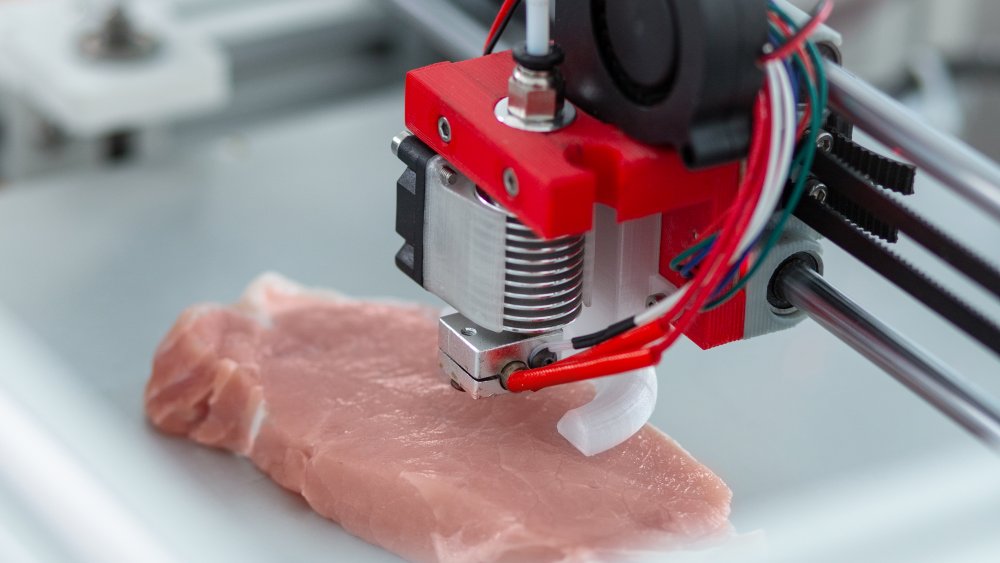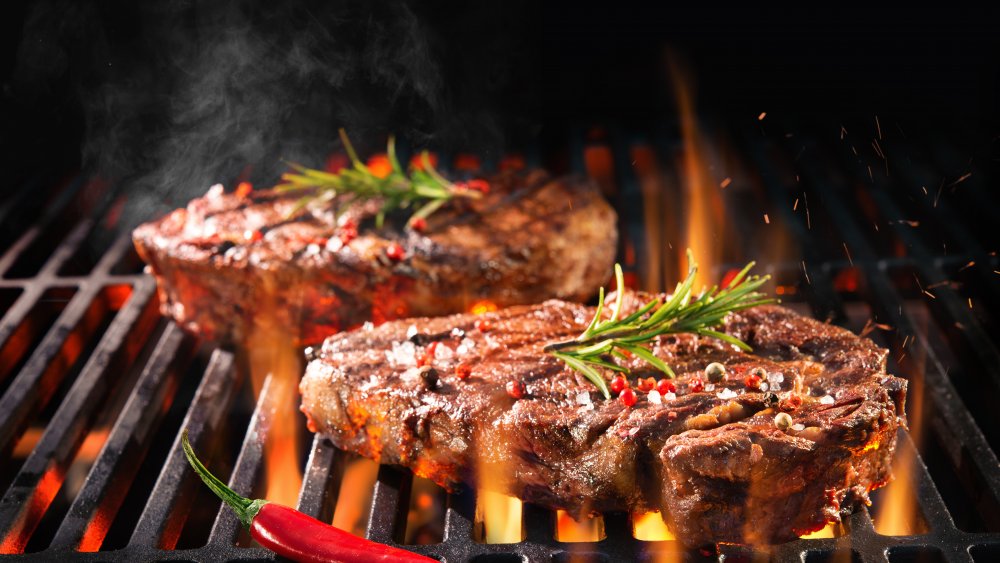What You Need To Know About 3D-Printed Steak
Attempts to imitate the taste and feel of meat using plant-based alternatives have long illustrated what Marvin Gaye and Tammi Terrell famously sang back in 1968 (via Genius): "Ain't nothing like the real thing, baby." In fact, it's tough to recreate the taste of traditionally prepared meat using a meat-based alternative. As The Guardian describes, when the Tel Aviv-based firm Aleph Farms cooked steak with lab-grown beef, the flavor didn't entirely live up to that delicious dead meat taste that steak fans know and love. So you might expect a plate of plant-based steak that came from a 3D-printer to taste more like the cud a cow chews than the flesh of the cow you wish you were chewing.
But chew on this: An ambitious startup in Rehovot, Israel called Redefine Meat is doing its very darnedest to defy your expectations and trick your taste buds. According to Fast Company, Redefine Meat is replacing the constituent parts of a steak with so-called "alt-muscle," "alt-fat," and "alt-blood" in an attempt to approximate the complexity of a cow's tasty anatomy.
Redefine Meat's 3D-printed Earth steak has zero cholesterol
3D-printed beef isn't a brand new phenomenon. The aforementioned Aleph Farms helped cosmonaut Oleg Skripochka successfully 3D-print space beef, space rabbit, and space fish while aboard the International Space Station. But Redefine Meat's 3D-printed Earth steak still promises to be out of this world if it catches on. According to the company's calculations, printing one of their fake steaks takes 95 percent less land and 90 percent less water and carbon dioxide than the real thing. And it's cholesterol-free. Holy cow — or rather, wholly not cow.
Pulling off this feat really would redefine meat. Steak is often thought of as the holy grail of meat slabs, something you can't mask with bread and ketchup like a meatless burger. And let's face it: Steakhouses might be feeding you a load of bull about the meat you're eating, anyway. At least this deception is more honest. Thanks to the versatility of 3D printing, a restaurant could alter the product without incurring extra costs to change the recipe. Why have lamb if you can have an equally delicious yet healthier and more sustainable rack of sham?

